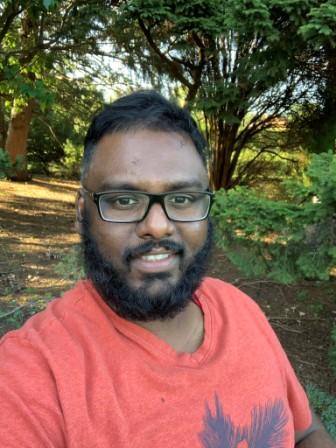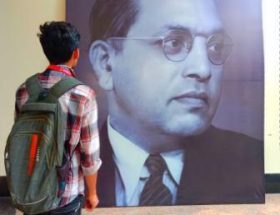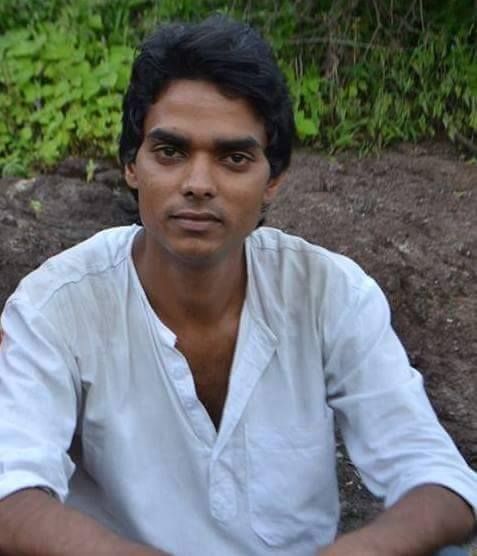John Ramachandran
In shallow mainstream and pseudo-progressive narrative, Kali is described as fierce and embodiment of power, femininity and even queerness. But, none of those narratives analyses to whom she was fierce and over whom she was powerful. Before going into the analysis let’s see who Kali is and what was the outcome of her ferocity.
Many South Asian indigenous cultures worship ancestral deities. Of which most tend to be women, there are deities who could be read as queer but in brahminical and post-colonial, homophobic and binary narratives those identities are lost. Yet there are clues, such as being described as “soft” (sāntham), “funny” (Koothu), not-to-be-taken-seriously and with noticeable outfits.
Brahminical narratives made all female folk deities as Shiva or Vishnu’s consort, sibling or daughter. In the case of male deities they were given brahminical parents or origin. This appropriation extends to historical intellectual figures such as Buddha, Avvaiyar, Thiruvalluvar and so on. The agenda behind this is to prove Dalits and Indigenous cannot be divine or intellectual or all divine and intellectuals have to be Brahmins.
Many Indigenous and folk deities were consciously appropriated by Brahminism and were given “Kali ” and “Ambal” suffix. In mainstream Tamil sangam literature some female deities are called Kotravai which loosely translates to Queen or Matriarch. Even Kotravai was not known to be Shiva’s consort or Vishnu’s sibling. Later, all female deities were grouped as forms of shakthi and even worse — calling them forms (avatars) of Brahman. Though this process happened over a course of time, and there were many narratives and layers, but the pattern stayed solid.
Appropriation of indigenous was accompanied by appropriation of Dalit and indigenous religions and belief systems. Appropriation monopolized South Asian religions as Hinduism and self-appointed Brahmins as custodians. This became the catalyst in establishing one of the most cruel forms of social stratification – The Caste system. Caste, Varna, Jāti are various names but the essence is cruelty.
Despite being appropriated, gods of the oppressed communities were assigned demon status. Some who resisted this oppression and defended their folks were framed as antagonistic (Asura, Ratchasa) characters.
Our ancestors were belittled by body shaming and mockery. For instance, depictions of any antagonist (Asura) characters in Caste Supremacist Hindusim, has bold features, curly hair, dreadlocks, mustache, breasts exposed, pregnant, canine teeth with presence of meat, cigars and alcohol.
Festivals such as Diwali, Holi, Navaratri and Dhusherra are celebrations of killing of our ancestors, in other words, enslavement of indigenous people of South Asia. Every year during these festivals we remember our ancestors through music, drama, story telling, lamentation and such. Though, it is marketed as “Light over Darkness” , “Good over Evil” and “Wisdom over Ignorance ”, it is actually a celebration of slavery. As folks committed to equity we should interrogate who or what are evil, dark and ignorant! Our indigenous knowledge, healing practices, beliefs, land were all stolen and appropriated and we were made outcastes. Now, our practices are seen as dark, evil and ignorant.
Dushera is celebration of the killing of Mahishasur. But indigenous tribes such as Asur, Munda, Bagdi, Bauri, Santal and Namasutra believe Mahishasur was our ancestor who ruled the region of Chaichampa. Indigenous folks refer to him as Hudur-Durga. In our oral traditions invaders who couldn’t defeat Mahishasur in war sent a beautiful, darker skinned woman, Durga. In indigenous traditions women and children are not seen as war targets or take part in war. Being darker skinned and bold in nature she tricked Mahishasur to think Durga was very much of indigenous origin. Mahishasur fell in love, got married to Durga and on the night of marriage she beheaded him and took power over the people and enslaved them. Now, Indigenous tribes mourn our ancestors during festive times. On the tenth day, “Dhasai”, folks lock themselves in their houses, fast and recite stories of our ancestors. Although, all of these stories are mythology, they can cite it as a reason to oppress us we should dismantle this oppressive framework.
In the caste dominant world, slaying of our ancestors and enslavement of our people is exhibited through rituals and festive events. It might be burning of an effigy, temple skits or animal sacrifice—all are a warning to the caste oppressed. In Sanskrit, Mahisham means buffalo; before cows revolution buffaloes were main providers of milk, specially in still in northern India. And buffaloes and pigs are a source of food in many indigenous cultures. So buffaloes symbolise life, hardy nature and stubbornness. But in Brahminical narratives it is something dumb and evil. As part of casteist rituals in some parts of North India buffaloes are decorated, named as Mahishasur and are sacrificed to remind us of the consequences of resistance. There are also rituals where animal fetuses are offered to their deities. Is it traumatizing to read? Imagine living through it.
To me Kali is just a tool of oppression, who happened to be female and of darker skinned. She is not different from a brown lady who is racist and homophobic. On the other hand, look at Nangeli, a Ezhava woman who courageously fought caste oppressive breast tax. She lost her life by cutting her breasts as an act of resistance. Vallalar who was vocal against caste oppression and started reformed religion. He wore a gender neutral outfit, preached non-violence, conducted conferences on equity and peace and fed the needy. Yet he was taken to court for his work. At the age of fifty he went missing and is still an unsolved mystery.
Savitribai Phule who was the first female teacher of India, her commitment in educating girls from caste oppressed backgrounds uplifted marginalized communities. She was assaulted everyday on her way to her school, yet she never gave up on her commitment. Amma Maniammai, who led the Dravidian movement after Periyar: of all her works, her Rama Vatham was an act of resistance as Ravana Vatham (enacting killing of Ravana by burning effigy) is part of government protocol. Babashaeb Dr Ambedkar who dedicated his entire life to empowerment of the oppressed: only because of him women’s rights were protected by laws. Manakott Amma of Nileshwar who was murdered for her advocacy for caste equity is now worshiped by the caste oppressed folks as part of Theyyam tradition. All trans and non-binary folks of Stonewall riots and all unsung Trans and non-binary folks, especially, BIPOC whose mere existence itself is an act of resistance: now tell me why Kali should be my Qween?
~~~










